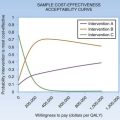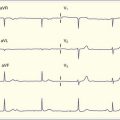93 Intimate Partner Violence
• The estimated prevalence of intimate partner violence victimization in women accessing emergency departments is as high as 36% in some populations.
• Interpersonal violence occurs across all populations regardless of social, economic, religious, cultural, or sexual orientation factors.
• More than 40% of women murdered by an intimate partner had visited an emergency department within 2 years of the homicide, and more than 90% had at least one visit for an injury.
• The emergency department serves a critical role to screen for, identify, and provide help to victims of intimate partner violence.
Epidemiology
The Centers for Disease Control and Prevention defines intimate partner violence (IPV) as threatened or current physical, sexual, or verbal abuse inflicted by a spouse, former spouse, or current or former boyfriend, girlfriend, or dating partner. Among women alone, IPV is estimated to result in 2 million injuries and 1300 deaths annually. Costs associated with IPV are estimated to be $5.8 million in the United States each year.1 It is estimated that 40% to 60% of homicides of women in the United States occur as a result of IPV.2
Although IPV is commonly thought to affect women and be perpetrated by men, studies suggest that women may be perpetrators of IPV as often as men, but male victims may be less likely to sustain physical injuries and seek medical care.3 Additionally, counter to these perceptions, a recent emergency department (ED)-based study performed in an urban ED found that 31% of men who had been in a relationship during the previous year had experienced some form of IPV victimization.4 In same-sex partners, IPV appears to occur at rates similar to that in heterosexual couples and with similar patterns, types of violence, and inciting factors.5
Pathophysiology
The etiologic factors and mechanisms mediating IPV are both complex and the subject of ongoing dispute by researchers in the field. Known factors associated with increased risk for IPV include poverty, societal and individual views of gender relationships, relationship conflict, alcohol use, and societal views about the use of violence in conflict.6 The sequelae of IPV range from mental health issues and minor injuries to multisystem trauma and death.7
Presenting Signs and Symptoms
History
Victims of IPV often do not disclose their abuse to health providers, and studies have shown that some victims will even deny abuse when directly asked.8 Surveys of IPV victims suggest that women fail to disclose victimization when physicians do not ask about abuse, when patients perceive that the provider lacks time or interest in their disclosure, or when they have concerns about police involvement or loss of confidentiality.9 The probability of IPV disclosure may be increased if clinicians provide a reason for inquiring about abuse, create an atmosphere of concern and support, and provide informational resources about IPV regardless of patient disclosure.8
In addition to direct inquiry by a clinician, recent ED-based studies have found that patient disclosure of abuse is increased when the ED uses an automated system of IPV screening, such as a computer-based screening questionnaire.10
Physical Findings
Most commonly, IPV victims seek treatment in health care settings for complaints not directly related to their abuse or with obvious physical trauma.11 When IPV victims are seen in the ED with evidence of physical trauma, women who are victims of IPV are more likely to have trauma involving the head, face, neck, thorax, breasts, and abdomen than are women with trauma attributable to other causes.12 In addition, injuries in various stages of healing or defensive injuries may be noted.
Although any pattern or mechanism of injury may be the result of IPV, clinicians should have a low threshold for suspecting IPV when seeing women with blunt trauma to the head, neck, and face (particularly as a result of punching or slapping). Across all injuries, women who are victims of IPV are more likely to have blunt trauma injuries caused by being struck or kicked or by objects used as weapons than to have an injury caused by a knife or gun. Two other common injury patterns are strangulation and sexual assault, both of which may leave scant or no physical evidence and thus may be missed by a clinician who does not suspect abuse.7
Persistent health problems resulting from IPV include chronic headaches; chronic back pain; neurologic symptoms, including fainting and seizures; gastrointestinal complaints, including poor appetite, eating disorders, and irritable bowel syndrome; and cardiac symptoms, including recurrent chest pain and hypertension.11 IPV victimization is also significantly correlated with an increased risk for mental health problems, including depression, suicidality, and posttraumatic stress disorder.13 Long after the abuse has ended, IPV victimization has long-term consequences on health status, quality of life, and use of health care resources11 (Box 93.1).
Differential Diagnosis and Medical Decision Making
![]() Red Flags
Red Flags
Symptoms and History Suggestive of Interpersonal Violence
Blunt trauma to the head, face, and neck
Abdominal pain, indigestion, or frequent diarrhea or constipation
Vague history of injury or a history inconsistent with injuries
From Coker AL, Smith PH, Bethea L, et al. Physical health consequences of physical and psychological intimate partner violence. Arch Fam Med 2000;9:451.
Treatment
![]() Priority Actions
Priority Actions
Stabilize and manage any physical injuries caused by interpersonal violence (IPV).
Identify and treat any secondary or partially healed injuries.
Contact law enforcement if reporting is locally mandated or desired by the patient.
Ensure that the patient has a safe place to stay and that any children are in a safe location.
Provide the patient with referral to social services or local resources for victims of IPV (or to both).
Educate patients who may be at risk for IPV about the danger signs and local resources.
Follow-Up, Next Steps in Care, and Patient Education
![]() Documentation
Documentation
Plan of Care
Document any reports to law enforcement or refusal by the patient of an offer to contact local law enforcement.
Document contact with social services and plan for ensuring the patient’s safety on discharge.
If the social history revealed coexisting mental health problems, document referrals or consultation with psychiatry service.
Houry D, Kaslow N, Kemball R, et al. Does screening in the emergency department hurt or help victims of intimate partner violence? Ann Emerg Med. 2008;51:433–442. e7
Jewkes R. Intimate partner violence: causes and prevention. Lancet. 2002;359:1423–1429.
Rodríguez MA, Sheldon WR, Bauer HM, et al. The factors associated with disclosure of intimate partner abuse to clinicians. J Fam Pract. 2001;50:338–344.
Wu V. Pattern of physical injury associated with IPV in women presenting to the ED: a systematic review and meta-analysis. Trauma Violence Abuse. 2010;11:71–82.
1 Breiding MJ, Black MC, Ryan GW. Prevalence and risk factors of intimate partner violence in eighteen U.S. states/territories, 2005. Am J Prev Med. 2008;34:112–118.
2 Brock K, Stenzel A. When men murder women: an analysis of 1997 homicide data—females murdered by males in single victim/single offender incidents. Washington, D.C: Violence Policy Center; 1999.
3 Cunradi CB, Caetano R, Schafer J. Alcohol-related problems, drug use, and male intimate partner violence severity among US couples. Alcohol Clin Exp Res. 2002;26:493–500.
4 Rhodes KV, Houry D, Cerulli C, et al. Intimate partner violence and comorbid mental health conditions among urban male patients. Ann Fam Med. 2009;7:47–55.
5 McClennen JC. Domestic violence between same-gender partners. J Interpers Violence. 2005;20:149–154.
6 Jewkes R. Intimate partner violence: causes and prevention. Lancet. 2002;359:1423–1429.
7 Sheridan DJ, Nash KR. Acute injury patterns of intimate partner violence victims. Trauma Violence Abuse. 2007;8:281.
8 Liebschutz J, Battaglia T, Finley E, et al. Disclosing intimate partner violence to health care clinicians—what a difference the setting makes: a qualitative study. BMC Public Health. 2008;8:229.
9 Rodríguez MA, Sheldon WR, Bauer HM, et al. The factors associated with disclosure of intimate partner abuse to clinicians. J Fam Pract. 2001;50:338–344.
10 Rhodes K, Lauderdale D, He T, et al. “Between me and the computer”: increased detection of intimate partner violence using a computer questionnaire? Ann Emerg Med. 2002;40:476–484.
11 Campbell JC. Health consequences of intimate partner violence. Lancet. 2002;359:1331–1336.
12 Grisso JA, Schwarz DF, Hirschinger N, et al. Violent injuries among women in an urban area. N Engl J Med. 1999;341:1899.
13 Houry D, Kemball R, Rhodes KV, et al. Intimate partner violence and mental health symptoms in African American female ED patients. Am J Emerg Med. 2006;24:444–450.






